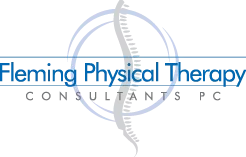The third most common pain complaint across the world is the all-too-common headache. Headaches can impact your everyday life by making it difficult to function properly. We’ve all been there – showing up to work or class with a pounding headache that you can’t seem to shake. Fortunately, relief is just around the corner with physical therapy. For more information on how our services can reduce or even eliminate yours, contact Fleming Physical Therapy today.
Why do I get tension headaches?
The most common type of headache experienced by older teens and adults is the tension headache. Also referred to as a “stress-related headache,” tension headaches occur when the scalp and neck muscles become tense or contract. They generally begin at the back of the back and then progress to the top, commonly causing discomfort behind the eyes. Pain can also sometimes be felt in the cheeks or jaw. Many people have compared the sensation of tension headaches to wearing a very tight hat or having their hair pulled. Tension headaches can occur for a number of reasons, including but not limited to:
- Increased amounts of stress.
- Fatigue.
- Poor posture.
- Issues with the neck or jaw.
- Anxiety.
- Depression.
- Arthritis.
What about other headaches?
If you are feeling any sort of pain within your head, chances are it’s a headache. In many cases, headaches will resolve on their own, without the need for medical intervention. However, if your headaches are severe or recurrent, they can greatly interfere with your overall quality of life. If this is the case, your headaches should certainly be evaluated further.
Before a physical therapist can design a treatment plan for you, the type of headache you are experiencing must first be diagnosed. The 10 common types of headaches include:
- Tension.
- Sinus.
- Migraine.
- Cluster.
- Rebound.
- Hypertension.
- Hormone.
- Exertion.
- Caffeine.
- Post-traumatic.
Seeking help through physical therapy:
At your initial visit, your physical therapist will review your health history and conduct a thorough evaluation of your physical abilities. You will discuss your headaches and any additional symptoms you may be experiencing along with them. Once your headache is diagnosed and any health risks are addressed, your physical therapist will create a treatment plan based on your specific needs.
During your first visit, you can expect to undergo any or all the following treatment measures:
- Questions regarding previous injuries to your neck, head, jaw and/or back.
- Inquiries about the location of the pain, in addition to any other symptoms you are experiencing.
- Examination of your posture while engaged in different activities.
- Tests of your muscle strength and sensation.
- Measurements regarding the range of motion of your neck, shoulders, and other relevant parts of the body.
- Manual therapy to ascertain the mobility of joints and muscles in your neck.
What will my treatment plan look like?
Your physical therapist may suggest any combination of specialized treatment services, including but not limited to:
- Stretching.
- Strengthening.
- Soft tissue mobilization.
- Ice or heat compressions.
- Muscular releases.
- Body mobilization.
- Muscle energy techniques.
- Cervical traction.
- McKenzie-based therapies.
With all treatment plans, you can expect to receive helpful education on treating your headaches at home that will supplement your in-office experience.
The benefits of PT treatments:
The primary goal of any physical therapy treatment plan is pain relief. However, there are some important factors that go into that, which will work to improve your overall function and quality of life. These include:
- Strength improvement. You’ll learn exercises to help strengthen the muscles that control your neck and upper back. This will help in improving your posture and increase your ability to stand or sit comfortably for longer periods of time.
- Neck improvement. Using manual therapy, your physical therapist will stretch the muscles in the back of your neck to relieve pain and increase movement.
- Posture improvement. Your posture throughout the day greatly impacts your likelihood of experiencing pain and/or tension headaches. Your physical therapist will teach you methods of improving your posture in order to function at optimum comfort in your daily life.
Persistent and life-altering headaches may not go away without physical therapy. To experience long-lasting pain relief and improve your quality of life, contact Fleming Physical Therapy Consultants today. We’ll help set you up with a treatment plan that will help you say goodbye to your persistent headaches in no time!
Sources:
https://www.moveforwardpt.com/SymptomsConditionsDetail.aspx?cid=fd8a18c8-1893-4dd3-9f00-b6e49cad5005



